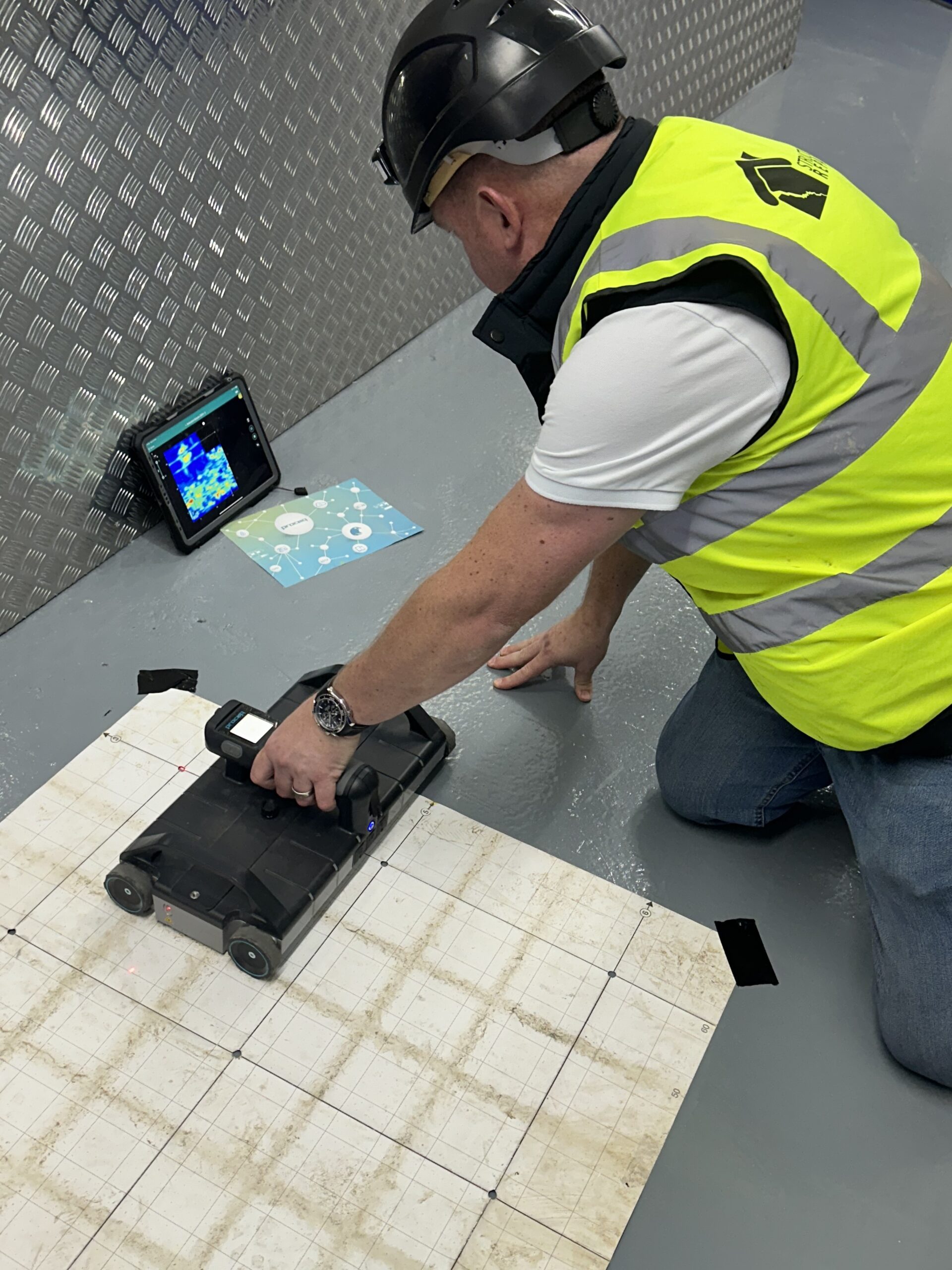Introduce the Transformative Power of Concrete Scanning in Maximizing Efficiency and Security
Concrete scanning has emerged as an important device in the building and construction market, providing exceptional advantages in enhancing job effectiveness and making sure security criteria. The transformative power of concrete scanning lies in its capacity to provide comprehensive insights and real-time information, transforming how projects are planned and performed.
Relevance of Concrete Scanning
Making certain the architectural integrity and safety of construction jobs begins with the vital action of performing thorough concrete scanning. Concrete scanning is a non-destructive method used to find and map subsurface components within concrete frameworks. This procedure is necessary in identifying possible dangers, such as rebar, post-tension cable televisions, and avenues, that may be concealed within the concrete. By utilizing advanced technologies like ground-penetrating radar (GPR) and electromagnetic induction, building groups can accurately locate these elements without triggering any kind of damage to the framework.
Furthermore, concrete scanning helps in optimizing job timelines and spending plan by staying clear of unforeseen costs and hold-ups that might develop due to unanticipated blockages within the concrete. Eventually, investing in extensive concrete scanning is an aggressive method that improves both performance and safety in construction tasks.
How Concrete Scanning Functions
Concrete scanning operates as a crucial device in building jobs by employing innovative modern technologies to find and map subsurface components without causing architectural damage. Ground Passing Through Radar (GPR) and Electromagnetic Induction (EMI) are two primary methods made use of in concrete scanning. GPR works by discharging high-frequency radar pulses into the surface area, which bounce back when they run into subsurface items or gaps. The moment considered the signal to return indicates the deepness and location of the objects. EMI, on the various other hand, utilizes electro-magnetic fields to recognize variances in product structures, such as determining rebar or conduits within concrete frameworks.
During the scanning process, the data collected is examined in real-time, enabling immediate identification of potential threats or barriers beneath the surface area. This information help in decision-making, making sure that building tasks continue securely and effectively. Additionally, 3D imaging software can be used to develop topographic maps of the subsurface components, even more improving task preparation and implementation. By utilizing these sophisticated modern technologies, concrete scanning substantially reduces the threat of pricey damages and injuries on building and construction websites.
Advantages of Concrete Scanning
Using innovative scanning innovations in construction projects supplies a wide variety of advantages, boosting both performance and safety and security on-site. One of the primary benefits of concrete scanning is the capacity to detect and situate embedded items such as rebar, post-tension wires, and channels properly. By recognizing these elements prior to drilling or reducing into concrete structures, the danger of unintentional strikes is considerably minimized, avoiding potential injuries to workers and damage to the structure itself. Concrete scanning assists in planning and making extra effectively, as it supplies exact details regarding the location and depth of architectural elements.

Situation Studies: Concrete Scanning Success

In one more case, a building and construction firm made use of 3D concrete scanning to evaluate the condition of aging concrete frameworks in a historical building. The comprehensive scans supplied useful insights right into the degree of degeneration and helped prioritize upkeep initiatives efficiently. By proactively attending to locations of concern identified via scanning, the business had the ability to expand the life-span of the framework and make certain owner security.
These instance research studies underscore the transformative power of concrete scanning in enhancing effectiveness, accuracy, and security in building tasks.
Implementing Concrete Scanning in Projects
Executing innovative scanning modern check my blog technologies during construction jobs has actually become significantly vital for enhancing precision and safety and security. By incorporating concrete scanning right into job preparation and implementation, construction teams can identify prospective risks, such as rebar or post-tension cables, concealed within concrete structures. This positive approach minimizes the risk of accidents, delays, and expensive rework, ultimately resulting in much more effective task timelines and budget plans.
To execute concrete scanning successfully, task supervisors ought to collaborate closely with seasoned scanning experts to establish one of the most suitable scanning methods for the specific job demands. Involving scanning professionals from the beginning of a task enables the team to develop extensive scanning plans that deal with essential areas of worry and ensure thorough data collection.
Furthermore, incorporating concrete scanning into routine job operations can streamline decision-making procedures, as real-time check information provides instant understandings right into the problem of concrete frameworks - Concrete Scanning. This data-driven method promotes informed analytical and makes it possible for groups to make changes immediately, cultivating a society of efficiency and security throughout the job lifecycle

Conclusion
Finally, concrete scanning plays a crucial role in improving effectiveness and safety and security in building projects. By using innovative technology to map and discover out see underlying structures within concrete, this process helps to stop expensive errors, make sure architectural integrity, and minimize threats on website. With the capability to reveal covert elements and offer accurate information, concrete scanning proves to be a useful device for enhancing job results and maximizing total success.
Concrete scanning is a non-destructive method made use of to spot and map subsurface components within concrete structures. Additionally, concrete scanning aids in enhancing job timelines and budget by staying clear of unforeseen costs and hold-ups that may emerge due to unpredicted obstructions within the concrete. One remarkable situation research entails a massive renovation task where concrete scanning played an essential role in guaranteeing job success.In an additional instance, a building and construction firm utilized 3D concrete scanning to evaluate the condition of aging concrete structures in a historic structure. By integrating concrete scanning right into job preparation and implementation, building and construction teams can recognize possible hazards, such as rebar or post-tension cables, concealed within concrete structures.